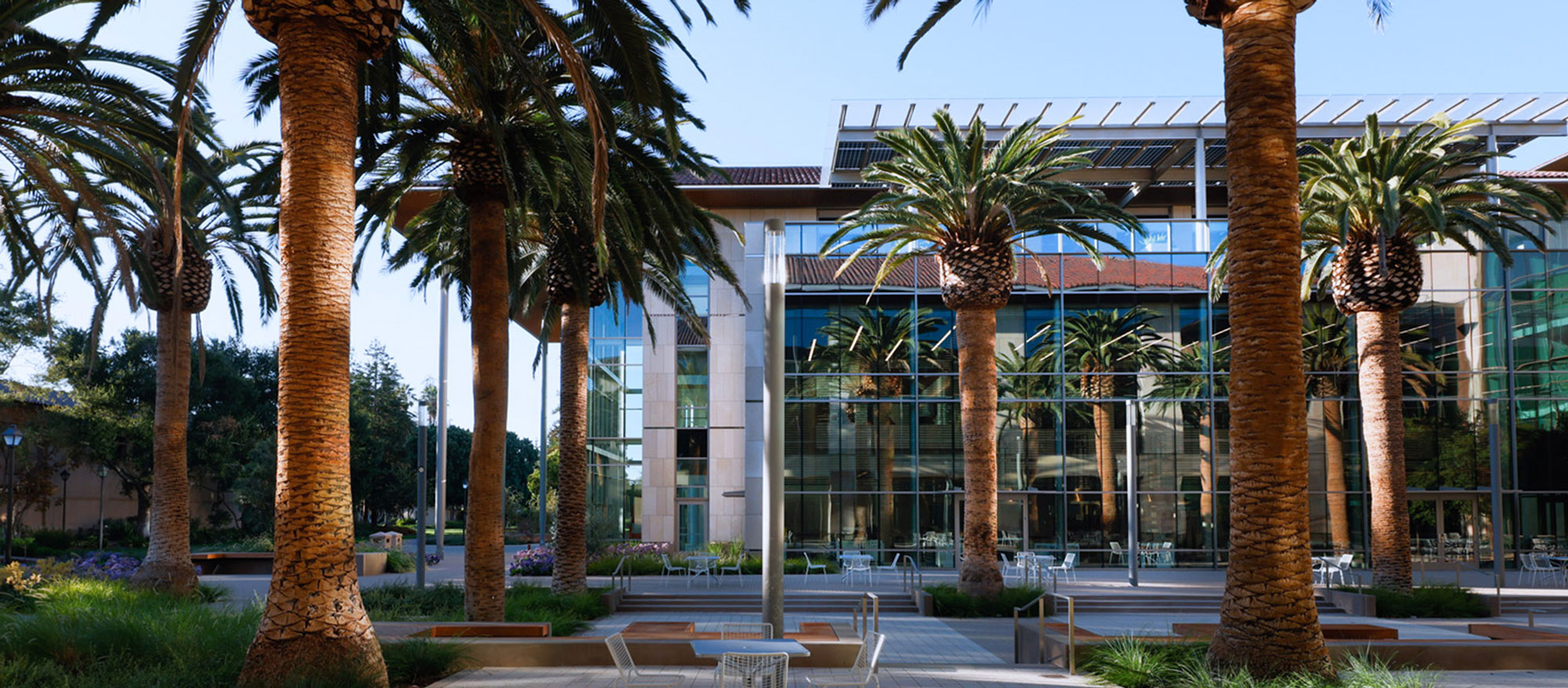New Vision, New Facilities
Featuring flexible labs, collaboration hubs, an Innovation Zone, and multidisciplinary project spaces, the Sobrato Campus for Discovery and Innovation is one of the largest STEM education facilities in the country.
COLLABORATE
Innovation happens when different skills and perspectives come together to solve complex problems.
With research neighborhoods for complementary departments literally built into the blueprint and collaborative project spaces throughout, the Sobrato Campus for Discovery and Innovation breaks down silos. Faculty and students are encouraged to ask questions, learn from each other, and find new approaches to research.
CONNECT
All of the resources of Silicon Valley come together here.
On-site research projects led by tech and life science companies, internship opportunities, workshops, and visiting scholars. Students start building contacts and gain professional experience as soon as they step foot on campus.
CREATE
This is a place where big ideas are explored and implemented.
SCDI brings scientific discovery from the fringes and showcases it in the center of campus with the Innovation Zone, Robotics Systems Lab, Latimer Energy Lab, Imaginarium virtual reality lab, and natural science labs—all outfitted with the latest equipment. Students are taught how to plan, act, and problem-solve with the end-user in mind.

By bringing together experts from diverse disciplines and giving them the latest resources, SCDI changes the way we approach STEM education.

STEM at SCU

An interdisciplinary team of students from the Department of Mathematics and Computer Science and the Department of Computer Science and Engineering work with Aromyx to help digitize taste and smell.

Biologist Terri Wrin ’79 has spent decades in the lab searching for ways to address some of the world’s deadliest viruses, starting with HIV and recently contributing research to COVID-19 vaccine development.

In the Imaginarium, Emily Dang ’20 (Computer Science and Engineering), Vicki Lim ’20 (Computer Science), Maggie Schulte ’21 (Computer Science), and Isabel Wu ’21 (Studio Art and Marketing) create a game exploring the multiple dimensions of marine sustainability.

Sam Bertram ’16, M.S. ’18
OnePointOne harnesses the efficiencies of machine learning and fully automated indoor farms to take on world hunger. Consider it the future of farming.

Scientists like Brody Sandel (Biology) and Christopher Bacon (Environmental Studies) can find the prints of human impact all over the environment. These trails lead to a climate-changed future. Could how we respond change everything?

The pandemic didn't keep Assistant Professor Lindsay Halladay from giving her neuroscience students the instruction they needed. Last year, Halladay led her students through the dissection of a lamb brain over Zoom.

Chemistry Associate Professor Paul Abbyad and a group of student researchers are hoping a new type of microfluidic device will help scientists learn more about the behavior of cancer cells.